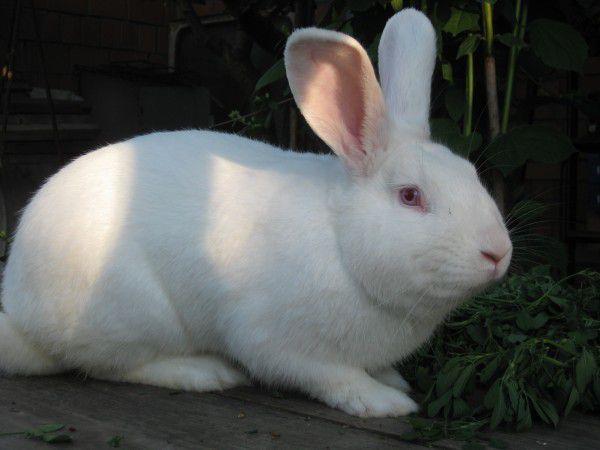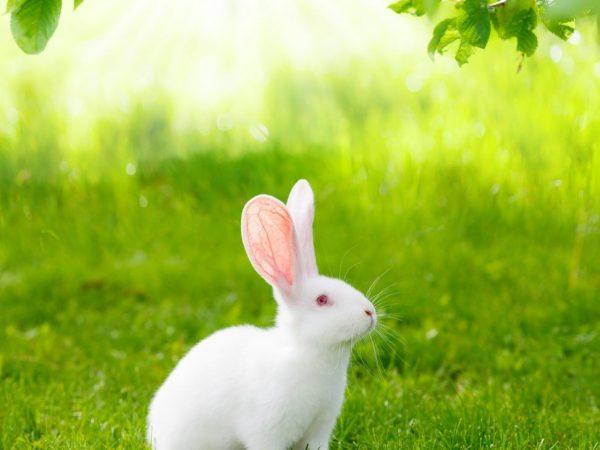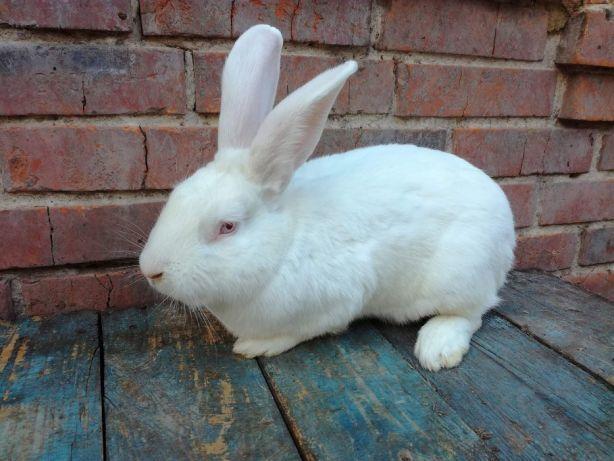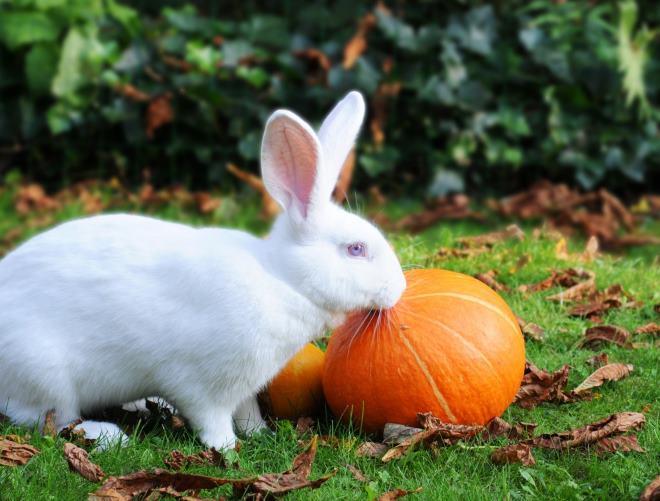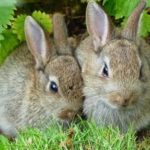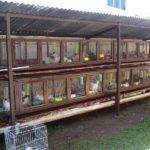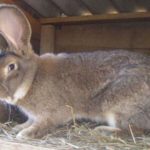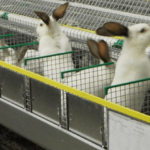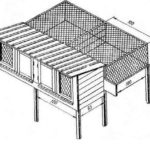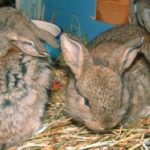The White Pannon rabbit is a hybrid breed that was developed in Hungary through crossbreeding. Animals are distinguished by their attractive appearance and high performance. Thanks to this, many farmers breed them. To achieve success in this matter, it is worth providing rabbits with quality care and a balanced diet. Disease prevention is of no small importance.
Origin
The White Pannon is considered a popular broiler breed.This hybrid was obtained in Hungary - at the Academy named after St. Stephen. The resulting hybrid was highly appreciated by professionals. Rabbits are distinguished by excellent milk characteristics, rapid development and rapid weight gain.
Description and characteristics of the White Pannon rabbit
Rabbits of this breed are characterized by white fur and an elongated body with pronounced muscles. Spots or other inclusions on the body of animals are unacceptable. Rabbits are distinguished by a well-built head with small erect ears and red eyes. They have soft and fluffy fur. The skin fits tightly to the body. There is a large amount of fluff on the paws, which facilitates the movement of animals.
Females are characterized by excellent maternal qualities. They easily cope with caring for and feeding their young. When breeding these rabbits, it is worth considering that crossing them with representatives of other breeds is permissible. Thanks to this, it will be possible to obtain strong animals that grow quickly.
The White Pannon is a meat breed characterized by thin bones. From each individual it is possible to obtain up to 60% pure meat. Animals are characterized by rapid development. Thanks to this, after 3 months they are allowed to be sent to slaughter. At this point, the carcass reaches 3 kilograms. In animals, puberty occurs quite early. The female is ready to mate at 90 days. She is capable of reproducing up to 10 young 7 times a year.
What are its pros and cons?
The main advantages of the breed include the following:
- rapid increase in weight;
- precocity;
- excellent yield of meat;
- high fertility - within a year it is possible to obtain up to 6-7 litters;
- a large number of rabbits - 8-9 cubs;
- excellent survival rate of young animals;
- thin skin and light bones;
- excellent milk production of females;
- developed maternal instinct;
- low feed consumption - for 1 kilogram of animal weight gain, 4.2 kilograms of feed are required;
- strong immunity;
- excellent fertilization rates;
- attractive appearance;
- excellent ability to adapt;
- possibility of breeding on an industrial scale or in small farms.
However, no shortcomings have yet been identified in representatives of this breed.
Features of its maintenance and care
To achieve the required productivity, animals need to be provided with suitable conditions and proper nutrition. In general, the breed is considered unpretentious and does not require expensive feed.
When creating a home for rabbits, it is worth making a cage with a mesh floor. The animals have well-furred paws. Therefore, you should not worry about the development of dermatitis on the soles.
The optimal housing sizes for animals are:
- width – 70-90 centimeters;
- length – 90-140 centimeters;
- height – 40 centimeters.
Up to 5 individuals can be present in a dwelling of this size. In addition, representatives of this breed can be kept in free enclosures that are heated. Rabbits require a temperature of +12-15 degrees and a humidity of 60-75%. The duration of daylight hours should be 14-15 hours.
At the same time, rabbits of this breed can easily tolerate a short increase in temperature up to +30 degrees or a decrease to -30. It is recommended to place 2-3 feeders in the cage. The first is made for hay and other hard food, the second for juicy food and concentrates, and the third for minerals.
It is also recommended to place drinking bowls in housing.For rabbits it is better to use nipple, vacuum, cup products. Automatic structures will also be an excellent solution. The number of drinking bowls is selected taking into account the number of individuals that live in cages or enclosures.
What to feed a rabbit?
The diet of animals directly affects their productivity. 1 rabbit requires 40 grams of feed per day. The menu should be nutritious and balanced. It is important that rabbits receive the following foods:
- compound feed;
- cereals;
- vegetables;
- legumes;
- waste obtained from sunflower processing;
- grass;
- hay from cereals and legumes.
Subtleties of breeding
Animals should not be allowed to gain excess weight. An obese female will not allow a male to approach her. The breeding procedure involves placing a female with a male. This is done for a quarter of an hour a day for a week. Thanks to this, it is possible to achieve guaranteed results.
Farmers note excellent parameters of fertility and milk production of females. The breed is characterized by excellent survival rate of cubs.
What causes illness and how to avoid it
Despite their strong immunity, animals are often exposed to viral infections if their housing conditions are violated. With an unbalanced diet, they may suffer from digestive disorders. At the same time, the rabbits' appetite worsens, bloating, diarrhea and general weakness occur. The most common pathologies that occur in these animals include the following:
- listeriosis;
- salmonellosis;
- myxomatosis;
- coccidiosis;
- hemorrhagic disease.
To avoid such problems, it is recommended to vaccinate animals on time. The first vaccination is performed at 45 days. The second vaccination is carried out after a couple of weeks, the third – after 20 days.
Where can I buy it and how much does it cost?
It is recommended to buy such rabbits from specialized farms. 1 animal will cost 750 rubles. White Pannon rabbits are characterized by rapid development and high productivity. These animals are not too demanding to care for and have strong immunity. That’s why many modern farmers breed them.

